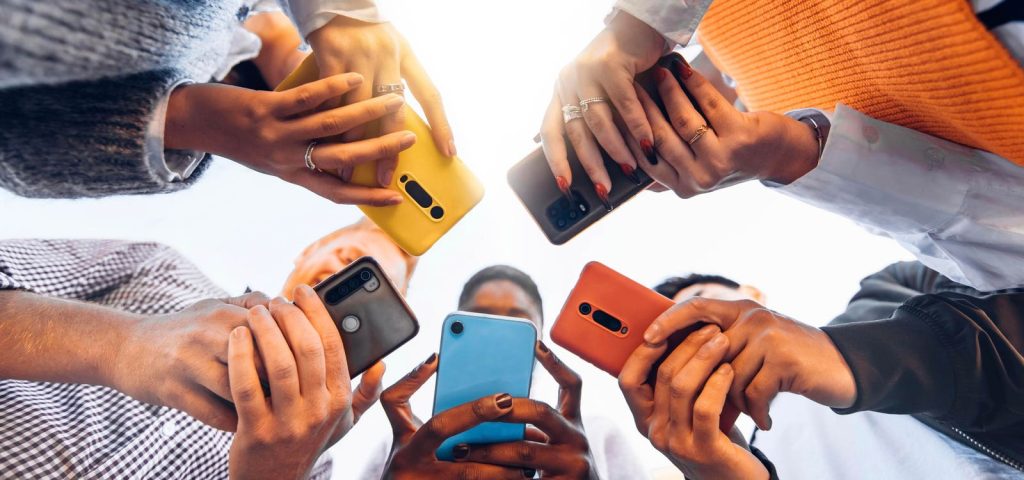In the intricate dance of human connection, Dunbar’s number has long been a guiding principle—a psychological threshold, delimiting the number of stable social relationships one can maintain. Traditionally set at around 150 connections, this concept, coined by anthropologist Robin Dunbar, finds its roots in the evolutionary development of the human brain.
Yet, as we navigate the vast landscape of the digital age, where our social connections extend far beyond geographical boundaries, questions arise: Does Dunbar’s number still maintain its relevance, or does the digital era rewrite the rules of social connectivity?
Dunbar’s Number In The Digital Age
Dunbar’s number, a product of cognitive evolution, reflects the finite capacity of our brains to manage and nurture social ties. Its presence in various societies, from tight-knit tribes to expansive social structures, highlights its universality.
The brain, it seems, imposes a natural constraint on the depth and breadth of our social circle. However, as we step into the digital realm, the dynamics of social connection undergo a profound transformation. The rise of online platforms serves as both a catalyst and a disruptor.
A study published in Cyberpsychology, Behavior, and Social Networking explored the effect of social media usage on the size of social circles and closeness of relationships. The researchers found that more time spent on social media made for a larger number of online “friends,” but not a larger amount of offline friends. Further, these findings were not associated with feelings of closeness towards online or offline friends.
On one hand, these platforms amplify our ability to connect with a large and diverse array of individuals, challenging the traditional constraints of Dunbar’s number. On the other, the question looms: Does the sheer quantity of connections dilute the quality of our relationships? In the virtual sphere, the psychology of social interactions takes on a new hue. The concept of “weak ties” gains prominence as we navigate through a sea of acquaintances and distant connections. Inferences about the impact of weak ties on our mental well-being come to the forefront.
Do these loose connections provide a sense of social support? Or do they contribute to the combined contradictory feelings of social overload and isolation that have become increasingly prevalent in the digital age?
“Social Overload” In The Era Of Social Media
Social media platforms, with their global reach, redefine the boundaries of social circles. The ability to connect with individuals across continents challenges the very essence of Dunbar’s number. However, can these digital connections truly compensate for the intimacy of face-to-face connections, or do they merely serve as placeholders, filling our lives with an overwhelming virtual facade of social connectedness?
A study from the European Journal of Information Systems investigated the link between social media usage and “social overload”—the feeling that too much of their social battery is being drained by online relationships. The authors found that social media usage, the norms involved in online relationships and the type of relationship (offline versus online-only friends) directly contributed to the experience of social overload, associated with digital fatigue and dissatisfaction with social media.
In navigating this digital landscape, our cognitive processes adapt. The brain, once accustomed to managing a finite number of relationships, now grapples with the intricacies of handling a multitude of demanding digital connections. The psychology of attention and emotional investment come under scrutiny. Does the online realm encourage shallower connections, or can it foster meaningful, profound relationships that stand the test of digital distance?
Tips From A Psychologist On How To Navigate Social Overload
In the midst of the digital age’s social whirlwind, where the number of connections can seem limitless, it’s crucial to navigate the delicate balance between quantity and quality in our relationships. Recognizing the enduring wisdom of Dunbar’s number invites us to approach our digital connections with intention.
Instead of succumbing to the overwhelming tide of online relationships, consider curating a space that nurtures genuine connections. Prioritize quality over quantity, and focus on the handful of relationships that truly resonate with you. Instead of drowning in a sea of fleeting interactions, choose to engage in meaningful conversations with those you keep closest.
Conclusion
It’s okay to acknowledge the constraints of our cognitive capacities for social connections and actively choose depth over breadth. Embrace the beauty of face-to-face connections when possible, allowing the richness of human interaction to flourish beyond the digital facade. By doing so, we not only honor the essence of our humanity, but also cultivate digital and physical spaces that truly enhance our well-being.
Read the full article here










